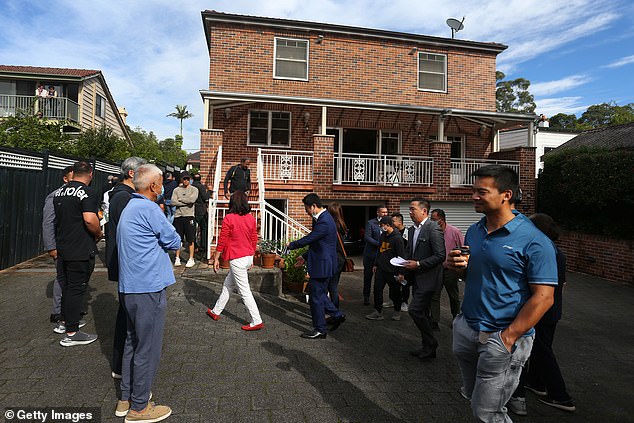James Wrigley, Senior Financial Advisor at First Financial, answers money questions every Wednesday.
Hello James,
I am 26 years old, single and work in public service. I make $75,000 a year. This may eventually increase to around $100,000 per year, but that is the maximum.
I live in Melbourne and don’t have a bank of mom and pop to help me get up the property ladder.
After rent, bills, clothing, food, entertainment, etc., I currently have about $400 a month to invest.
I’m pretty resigned to the fact that I will never own a home due to high property prices.
Despite this, I would still like to secure my financial future in the best way possible with the income I earn.
What do you think I should do with my leftover money? Should I invest in stocks?
Thank you,
Lucia.
The median house price in Melbourne currently stands at $918,000, while the median apartment price is $554,000.
Hello lucia,
The fact that you are thinking about this at such a young age is fantastic. A small amount saved over a long period of time is much easier to achieve than a larger amount over a short period of time; let the magic of compounding work for you.
The first thing I would like you to do is secure your short-term financial future. Before you start investing, I’d like to make sure you have at least three months of your living needs in a high-interest savings account. This is money you DO NOT touch unless it is for an emergency. A trip to Bali with your friends is not an emergency, a car breakdown or having to pay an insurance excess is.
Once you start investing, you don’t want to be forced to sell any of your investments to fund emergency needs; That’s what the emergency fund is for.
Earning $75,000 a year means your monthly take-home pay will be around $5,000. If you can save $400 per month, that means you’re spending $4,600 per month. You should have an emergency fund savings goal of $14,000.
Once you’ve reached that goal, you can start considering investing. A low-cost index-style ETF is a good place to start. There are many micro-investing platforms available that will give you easy and low-cost access to investing in the stock market. If you put $400 a month into a compound growth calculator with an 8 percent annual earnings rate you should generate about $73,000 in the first 10 years; After 20 years, that’s more like $235,000 and after 30 years it’s almost $600,000.
The last piece I would like you to work on is increasing your income. Only so far can you reduce your expenses: you need to pay for food, accommodation and clothing; All of that will cost you something. But, in theory, there is no limit to how much a person can earn. Certain occupations pay more than others. You mention that your current position can increase to about $100,000. I would really love to see you doing everything you can to get your income up to that level as soon as you can.
Shadow someone more senior, ask them to take on more tasks, do some training if necessary (especially if your employer is willing to pay for it).
Holding everything else equal, increasing your income to $100,000 means your take-home pay increases to $6,430 per month. Your savings rate would increase to $1,830 per month (from your current $400). Those investment portfolios then become approximately $335,000 in 10 years, $1,078,000 in 20 years, and $2.7 million in 30.
Now that is a secure financial future.
I hope this helps.
Jaime.
Send your questions to James at thewealthbuilder@dailymail.com.au
James Wrigley is a representative of First Financial PTY LTD ABN 15 167 177 817 AFSL 481098
This column has been written for general information only.
Every effort has been made to ensure it is accurate; however, it is not intended to be a complete description of the matters described. This has been prepared without taking into account any personal objectives, financial situation or needs. It does not contain and should not be considered to contain any securities advice or recommendations. Furthermore, it is not intended to be relied upon by recipients in making investment decisions and is not a substitute for the requirement for individual research or professional tax advice.
First Financial Pty Ltd makes no warranty as to the accuracy, reliability or completeness of the information contained herein. Except to the extent that liability cannot be excluded under any statute, First Financial Pty Ltd and its directors, employees and consultants do not accept any liability for any errors or omissions in this presentation or for any consequential loss or damage suffered by the recipient. or anyone else. . Unless otherwise stated, First Financial Pty Ltd is the source of all charts; and all performance figures are calculated using exit-to-exit pricing and assume reinvestment of revenue, taking into account all fees and charges but excluding the entry fee. It is important to note that past performance is not a reliable indicator of future performance.
No part of this presentation should be used anywhere else without the prior consent of the author.

